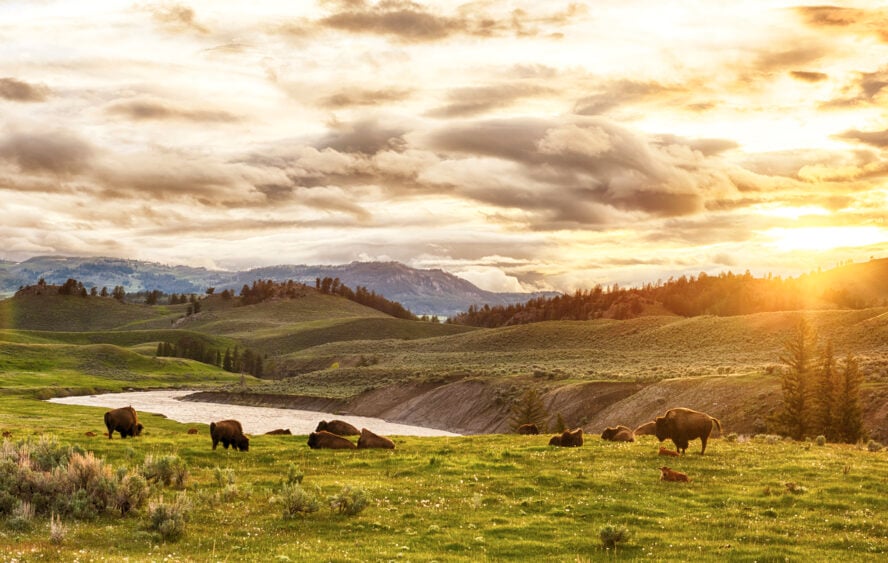The deafening silence of the near-Polar night was only punctuated by the occasional groan and hum of an iceberg shifting.
I was standing next to my tripod—its metal so cold that touching it made my fingertips sting—with my neck craned back and numbed face pointing up towards the clearing clouds.
I knew before arriving in Iceland that my chances of seeing the Northern Lights depended almost entirely on luck. With Iceland’s notorious wild weather and stormy winters, it would’ve made more sense to travel back to northern Sweden or Finland, high above the Arctic Circle, where winter skies are almost always clear. But the easy path isn’t always the most rewarding.
Then the first streak of color began to spill across the sky.
Electric blue, neon-violet, and emerald green wisps of flickering light painting ribbons above Fjallsárlón’s glacial lake. Immediately my gloves came off, and with my camera poised and ready I started shooting.
It was as if Iceland’s light switch had been flipped on.
The silhouetted mountains bloomed against an array of colors, movement, and ice. Jagged icebergs and rippling black water came to life, reflecting the colors in the sky, as the distant ice cap nestled between the peaks glowed like a faraway lantern.
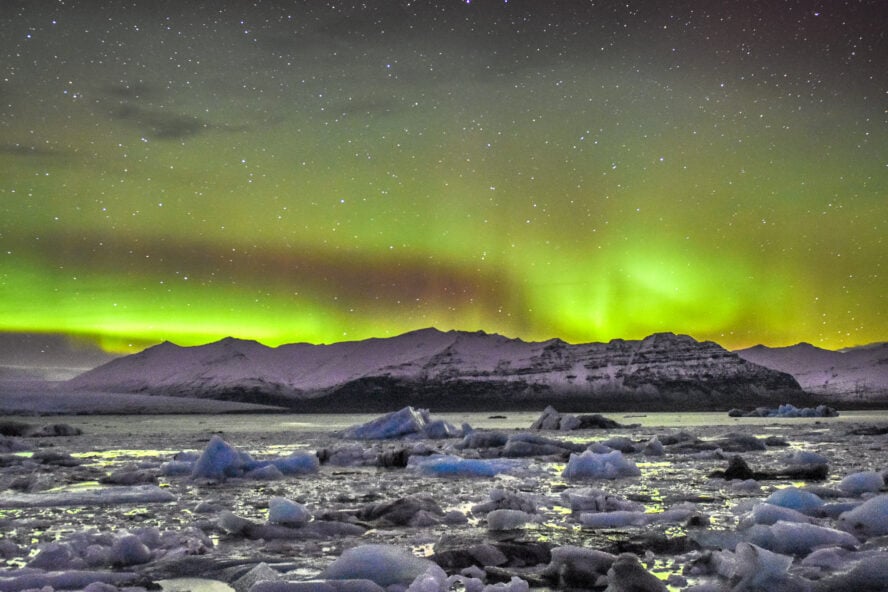
Pros and Cons of Visiting Iceland for the Northern Lights
As a child I would listen to my grandfather talk of seeing the aurora in places like Greenland and Siberia. His work—he was a documentary filmmaker and journalist—took him to far corners of the Earth, collecting tales and experiences like some of us collect patches on a backpack.
He was part of the reason why I became interested in Subsaharan Africa at a young age too, and why I now live in Mozambique working as a wildlife photographer and journalist. His stories of the Arctic, however, became constant themes in my daydreams.
To the Northern Lights I go
In early 2015, I decided that it was time to make the journey north. After pouring over articles and guidebooks detailing where to best see the northern lights, I decided to make my way to a region far above the Arctic Circle in Sweden.
As a photographer, I was looking forward to the photos I’d take, but I wasn’t prepared for how grandiose the lights are to see with your own eyes. Photographs rarely capture the scale as they stretch from horizon to horizon, which made me feel smaller than I ever had before. The only other experience that mildly emulated that feeling was as a child, laying on my back at a science museum’s planetarium, with a 180-degree screen displaying holographic planets and stars above me.
There was a profound sense that I was looking at something unchanged and ancient. This phenomenon had been written about and witnessed by humans for thousands of years, and would likely continue for thousands more.

Understanding the Phenomenon: A Mix of Science and Myth
What are the Northern Lights?
When searching for the northern lights, it’s helpful to know what it is, exactly, you’re looking at.
The northern lights—also known as the aurora borealis—is an astronomical phenomenon that occurs when particles from solar storms of the sun slam into the Earth’s magnetic field. When these particles hit our atmosphere, they travel down the magnetic field lines and finally enter into Earth’s atmosphere at the poles, where the field is naturally weakest. What we see is a cosmic confrontation of atoms and molecules resulting in a spectacular display of exploding waves of multicolored light.
(Yes, there are also auroras at the South Pole, though they are less common and usually only seen in Antarctica and parts of Tasmania).
The aurora’s colors usually depend on the gasses in the atmosphere at the time, as well as the latitude of where you’re standing. While green is typically the most common color in Iceland, it’s not impossible to have a show of red, purple, and even white wisps.
The Northern Lights in Folklore
Though we now understand the science behind the northern lights, this wasn’t always the case. The assumed first record was written on a Babylonian clay tablet belonging to King Nebuchadnezzar II (568 BC).
Since then, for centuries, stories and mythology about these glittering lights in the sky have sparked tales and stories all over the world. The northern lights are, unsurprisingly, most prominent in Norse mythology. In Finland, the lights were thought to be sparks illuminated by the tail of an Arctic fox running across the sky. In Sweden, it was thought that northern lights brought good news, and were an earthly manifestation of their gods.
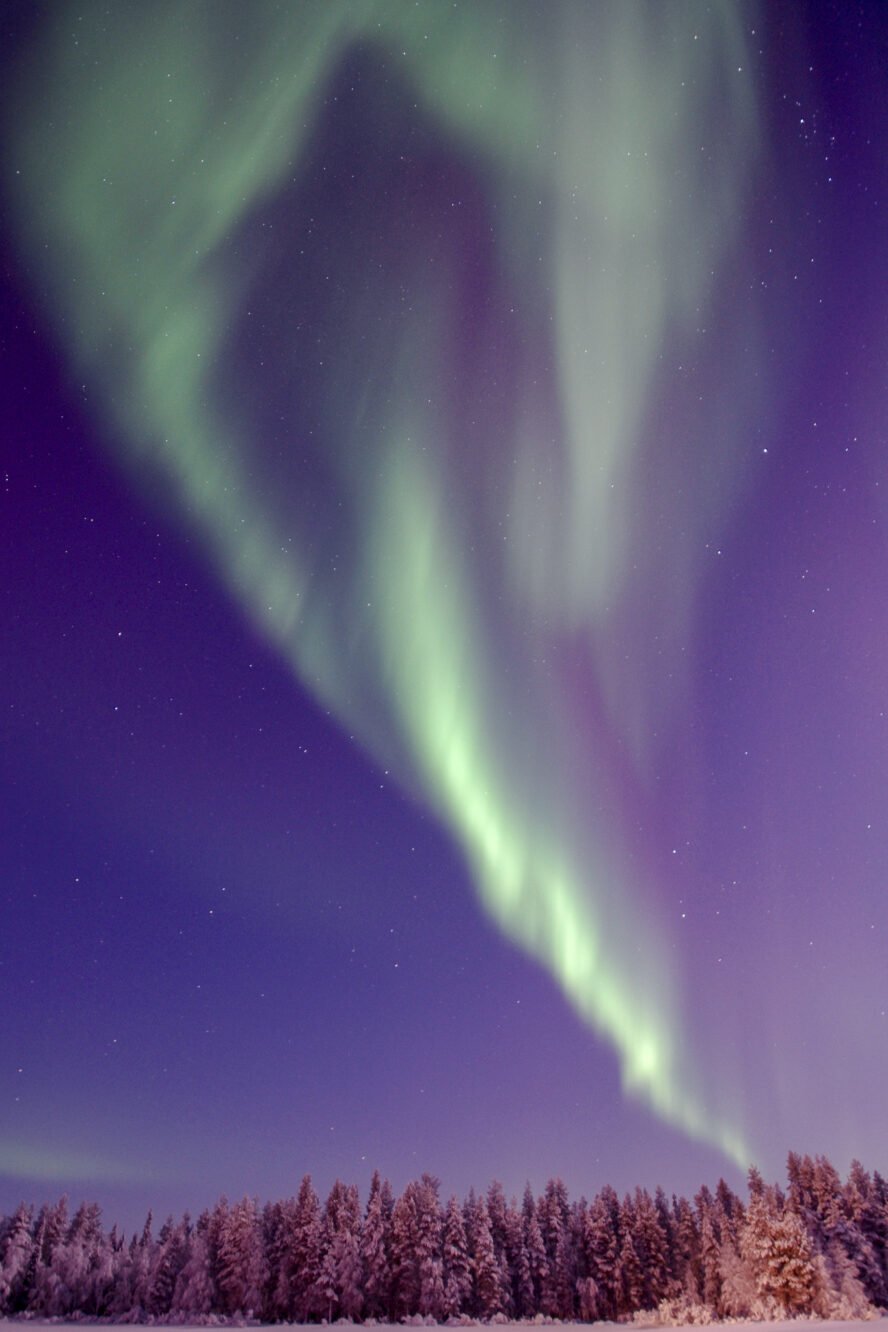
Not all cultures found them to be enchanting gifts from benevolent forces. The Sámi people in Lapland believed it taboo to talk about the lights, and if you did, it would bring bad luck. It was considered dangerous to taunt the lights by waving at them or whistling when they appeared in the sky, as this would alert the aurora to your presence. If this happened, the lights would grab you and carry you up into the sky.
How to Plan a Trip to See the Northern Lights in Iceland
After my first visit, I began leading annual northern lights photography workshops in Iceland, Finland and Sweden—but now, Iceland has become my main choice due to its culture and otherworldly landscapes: the moonlike landscapes, multicolor lava fields pinpricked with steaming geysers, incredible hiking trails, and hot springs, black-sand beaches studded with icebergs, seaside Nordic villages, calving glaciers, and Earth-pounding waterfalls made for the most breathtakingly beautiful setting for northern lights hunting.
With the exception of booking a trip at the very last moment when weather and solar flare forecasts would be the most accurate, traveling to Iceland for the aurora borealis can be a gamble. If you want to decrease the gamble, the best way to see the Northern Lights in Iceland is to travel with an expert. To help manage the “risks” I’m sharing some lessons learned and best practices from my experience.
What is the best time to visit Iceland for Northern Lights?
The best time to visit Iceland for the Northern Lights is between September and March, the only months where the nights are long and dark enough that they’re visible – it’s arguably the best time when you can see the Northern Lights in Iceland. In April, the nighttime hours are already getting too short and too light, and in peak Icelandic summer, the sun never sets at all—so even if there are auroras above, they’re invisible.
While December and January have the longest nights—daylight is only four or five hours during this time—the calmer weather of the shoulder months (November, February and March) makes them optimal for northern lights viewing.
Not only that, but the longer days during those months mean that when you’re not out hunting for the auroras, you can take full advantage of the 10 to 13 hours of daylight and enjoy other adventures, such as the Laugavegur hiking trail, hiking in Thorsmork, or the best hikes in Landmannalaugar. This still leaves you with nearly 14 hours of dark skies every night, which is more than enough time to stand outside under the black sky, looking for those streaks of color to cascade above you.
It’s important for every traveler to keep in mind that just like any other phenomena dependent on weather, seeing the northern lights has a lot to do with luck, patience, and being in the right place at the right time. That said, there are certain things someone can do to increase the odds of seeing the auroras.
Where to see the Northern Lights in Iceland
The most important element is to spend time in a location with as little light pollution as possible. Even though the aurora borealis can be seen in towns and the capital city of Iceland, Reykjavik, their brilliance is significantly more vibrant in a remote place. A good idea would be to stick to the hidden trails in Iceland.
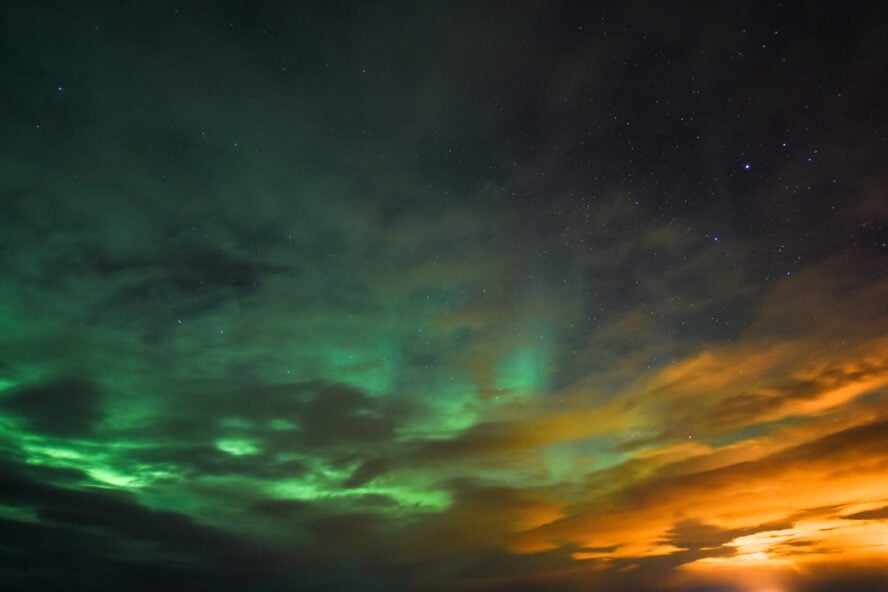
This will also help you see faint auroras which would be unnoticeable in an area with street lamps and buildings. A weak streak can signal that stronger ones are on their way, which can help you prepare. Here are the four best places to see the Northern Lights in Iceland:
Jökulsárlón Glacier Lagoon
One of my favorite areas to see the lights is at the Jökulsárlón glacier lagoon. It also happens to be favored by many others as well, as it is considered one of Iceland’s most iconic and famous spots.
Located nearly 400 kilometers (248 mi) east from Reykjavik and hugging the border of the Vatnajökull National Park, Jökulsárlón is Iceland’s largest glacial lake and offers spectacular views of the volcanic Vatnajökull ice cap, as well as the building-sized jagged icebergs that float in the dark water.
The lack of a nearby town allows for dark skies, though the highway running along Iceland’s coastline is dotted with guesthouses and hotels, making access to Jökulsárlón fairly easy if you have a car, or arrange a taxi with your accommodation.
Fjallsárlón Glacier Lagoon
Only ten kilometers down the road from Jökulsárlón is the Fjallsárlón glacier lagoon, which—in my opinion—is the best spot to look for the northern lights in Iceland.
Even though Fjallsárlón is less popular than the previous locale, it offers similar, astounding views of surrounding glaciers and icebergs. And it is often far less crowded. While dealing with headlights and headlamps can be a bit of a nuisance at Jökulsárlón, it’s likely that at Fjallsárlón you’ll be all by yourself, and if you manage to be there on a clear night, the aurora displays can be spectacular.
Snæfellsjökull, Snaefellsnes Peninsula
Located about 200 kilometers (124 mi) north of Reykjavik, the dark and relatively unpopulated peninsula is just far enough away from the city that if you spend a few nights there you’ll escape the day-trippers, and have opportunities to find locations where it’s just you, wilderness, and empty, dark skies. And because of the daylight during the shoulder seasons, you can enjoy some of the best ski touring in Iceland on and around the Snæfellsjökull volcano too, as well as a classic Iceland volcano hike.
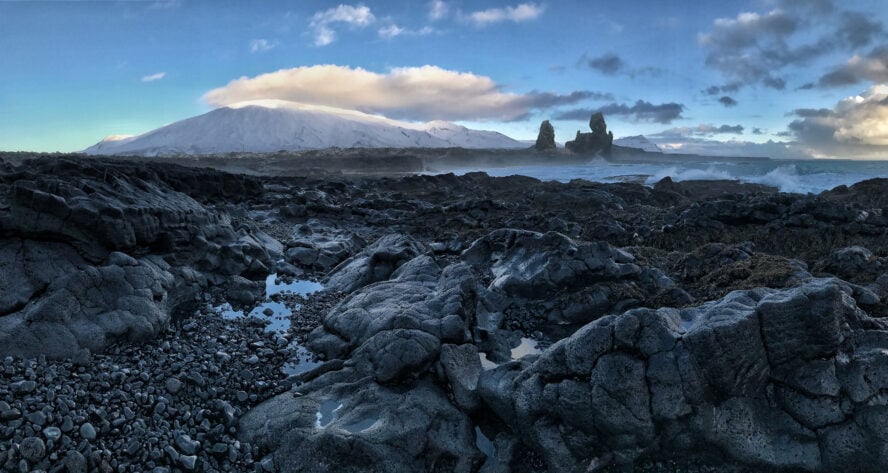
Mývatn
For those looking to explore the north side of Iceland, Mývatn is the place to go. Often referred to as the “northern lights capital” of Iceland, Mývatn is just an hour’s drive from Akureyri, Iceland’s second largest city. Akureyri can be reached via a 45 minute puddle jumper flight that departs daily from Reykjavik.
Mývatn is an inland lake that sits in its own microclimate, exempting it of the heavy clouds and fog that plagues much of northern Iceland. Therefore, even though Mývatn is considered more difficult to reach than locations within a half-day’s drive of the capital, its—relatively—consistent clear skies has made it an increasingly popular northern lights destination for travelers looking to go off the beaten path.
Ultimately, the more remote you can get with the least amount of light, the more likely you are to see the lights. That said, flexibility with your plans is also important since seeing the northern lights in Iceland also highly depends on weather. If you can, try to plan your trip—or nights out of Reykjavik—to overlap with periods of clear weather. Even if the solar flares are strong, an overcast evening will prevent you from seeing anything.
Preparing for a Night of Watching the Northern Lights in Iceland
Iceland typically doesn’t get as cold as other Arctic and Subarctic regions where the aurora can be seen, but that doesn’t mean we should take it any less seriously. Situated just a touch south of the Arctic Circle, the country is in the path of the North Atlantic Current which keeps temperatures warmer—the caveat that it also brings unpredictable weather. If you’ve ever gone hiking in Iceland, you’re well aware of its tempestuous nature.
What to wear
When packing to stay warm on a winter trip, it’s important to remember to dress in layers. Not only is it cold, but the country is known for its howling winds and sudden storms. This is important not only if you’re going winter hiking in Iceland, but especially for someone who is standing outside for hours at a time looking for the lights.
Layering
Same rules apply as for the hiking tours in Iceland: Wear a base layer, such as thermal long-johns, followed by a wool or fleece sweater, a down jacket made for below freezing climates, and a windbreaker to help protect you from the wind chill. For pants, follow the same idea: thermal long underwear, wool or fleece pants over that, and finally, some kind of water-resistant, windbreaker-style pants over top of that.
Gloves, socks and boots
Wool socks and waterproof snow boots are also good ideas, even if there isn’t any snow on the ground. When looking for the northern lights, a lot of time can be spent standing in one place, leaving your feet to be especially susceptible to the cold. In the same vein, waterproof gloves or mittens are also a good idea. It’s important to keep your extremities warm and dry, as your fingers and toes are most likely to be the first parts of your body to show distress when it’s cold.
Remember that to get as far from light pollution as possible, you’ll have to drive far from the city. While some parking areas will have great views of the lights, others may require a bit of a walk up a trail—so you also have to consider how to carry your other layers and gear, and be mindful that it might be awhile until you get back to warmth.
Tips for photographers
As a photographer, I’m often working with my hands when the northern lights come out, as I need to handle my cameras and equipment.
My handy glove system
I’ve found wearing fingerless gloves under big, cozy mittens not only keeps my hands warm, but also allows me to quickly remove the mittens to work with my camera when necessary. A waterproof hat and scarf are also good ideas (don’t forget to keep your ears warm!). As well, I like to bring small hand warmers with me to tuck into my boots and mittens.
Gear
For photographers, remember to pack your tripod, remote shutter release to avoid camera shake, and spare fully-charged batteries. The colder the air outside, the faster your batteries will drain; don’t be caught under a spectacular lights display with a dead battery!
Finally, on my last photography trip to Iceland I also brought beanbags to weigh down my tripod to avoid it rattling in the wind and causing disturbances to my photos.
Mind the risks
The risks go up the more remote you are, the size of your group (whether you’re with a group, with a guide, or on your own), and the further you move away from a hotel, town or city.
If you’re traveling alone or without a knowledgeable guide, it’s a good idea to only set out if it’s an area you know. Try not to stray too far from where you started (whether it’s your accommodation, car, or town). Standing for hours in the darkness while staring at the sky can become extremely disorienting; constantly check in with yourself to be sure that you know your way back to where you started.
It’s also a good idea to familiarize yourself with the symptoms of hypothermia. If you or someone you’re with starts to grow confused and/or clumsy, can’t stop excessive shivering, seems disoriented and/or extremely tired, or begins to slur their speech, it’s crucial to get back to your accommodation as soon as possible.
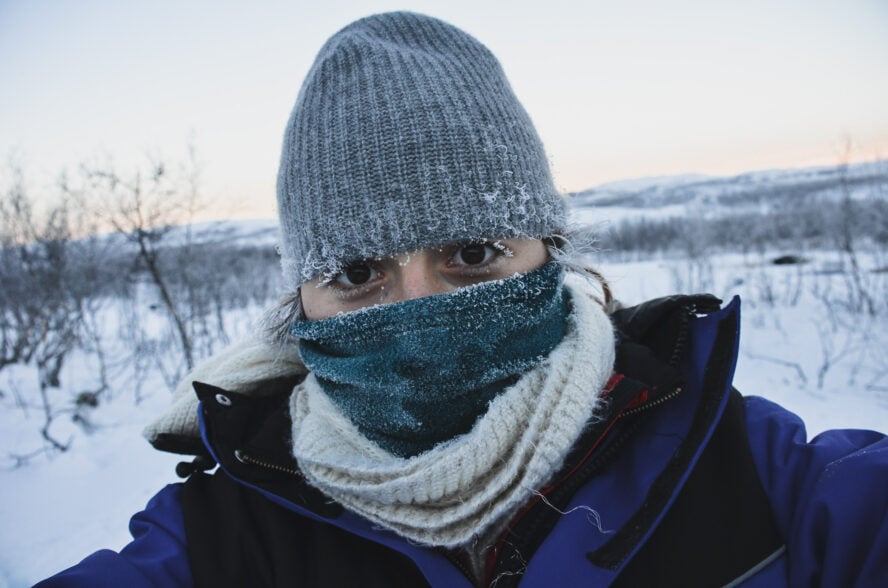
The Tales Were True
It’s funny, the power of an image, a story.
A photograph of my grandfather standing under a green ribbon of aurora hung on the wall of my childhood home, and the fantastical idea of standing under waves of color became a dream I was determined to someday see.
The first time was one of the most memorable experiences of my life, and it’s why I continue to return to Iceland. I’m already daydreaming of those steaming hot springs, endless lava fields, volcanic beaches, towering glaciers, and ribbons of color exploding across the sky.
Maybe, next time, I’ll see you out there.






